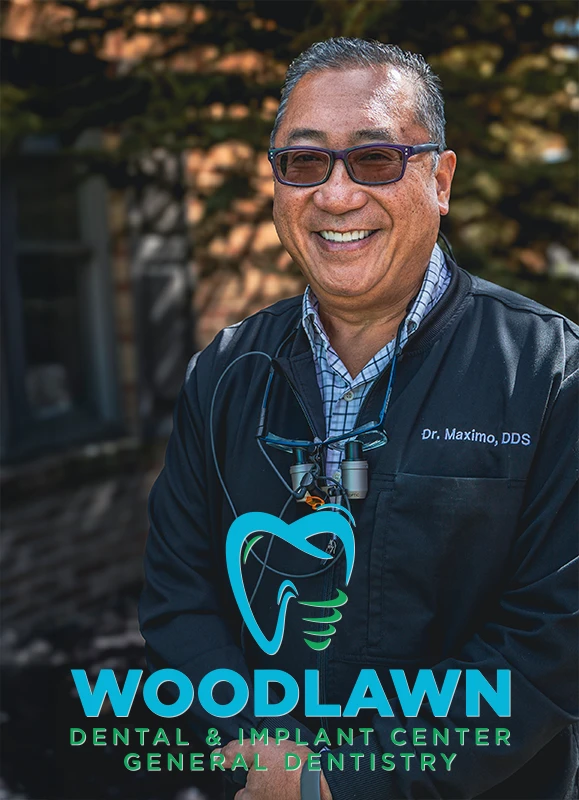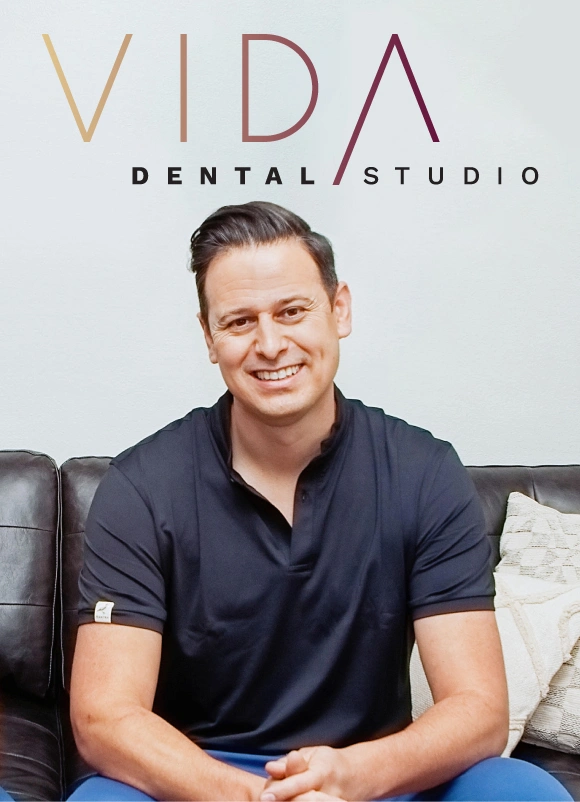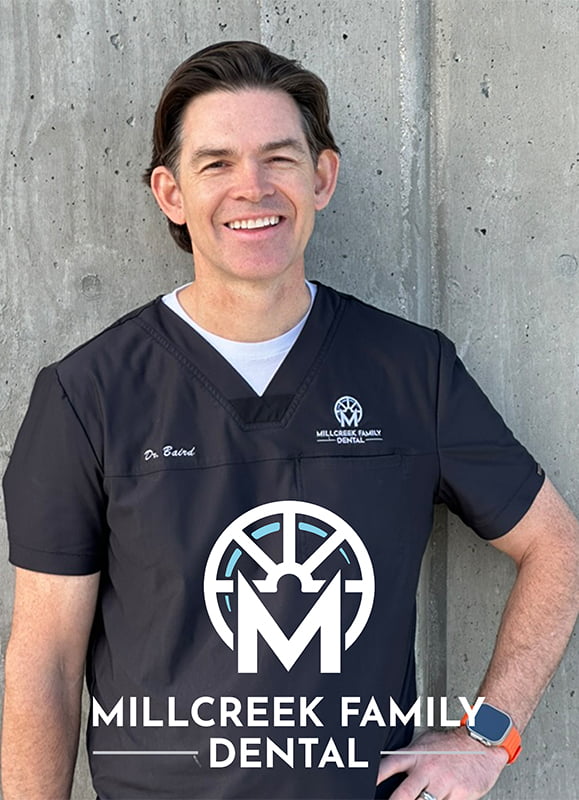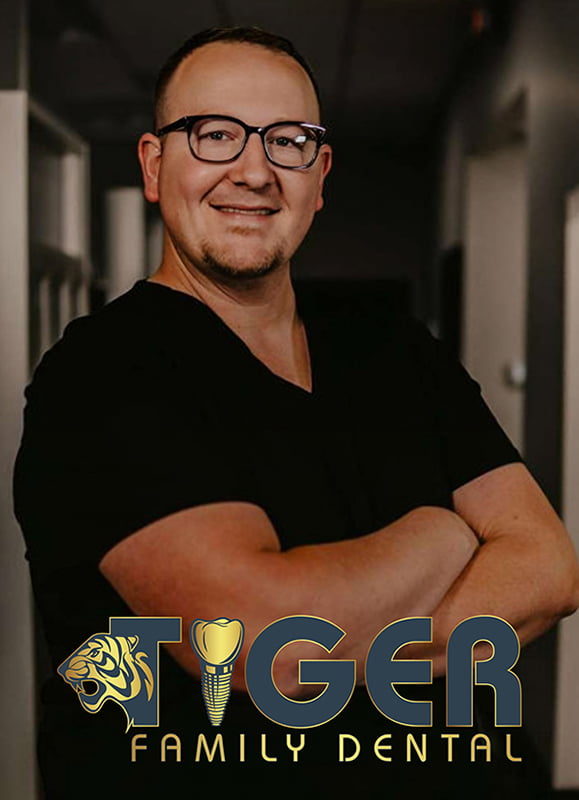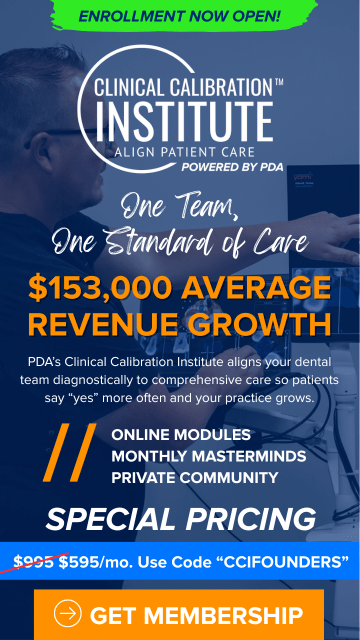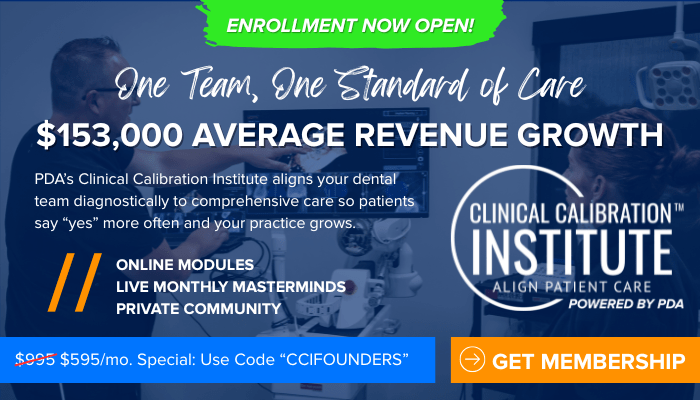A Plan That Works (Part 1) with Christine Uhen & Stacy Deemer
One of the most unsexy, yet vital parts of running a successful dental practice is having and working a strategic plan. You may think you have a plan, but are you actually working your plan or is your plan working you? Everybody can make a strategic business plan, that’s the easy part. It’s the starting, the progressing, and the achieving where things usually stall out. Today, we’re taking a look at the first steps to building – and working – a strategic plan that supports your goals of growing your dental business, including:
- Figuring out your why
- Create more value in your day by creating a plan so you know where to put your energy
- Know what you are measuring and why
EPISODE TRANSCRIPT
REGAN: Hi there! Regan Robertson here co host of Everyday Practices dental podcast. One of the most unsexy, yet wildly productive things doctors can do today is make sure you’re working a strategic plan for your business. As a small business owner, I know the tight feeling in my chest of trying to run a business without a plan or strategy.
The truth is, it’s easy to regain control. When you think strategically, the trick is getting the right frameworks in place so you can work your plan rather than the other way around. That’s why Dr. Chad and I are eager to welcome expert dental business strategist, Christine Uhen and success advisor Stacy Deemer today, so you can discover what you really want to get out of your practice, and which support will help you achieve long term success.
This two part series will help you reclaim power with the knowledge you need to understand the power of strategic business planning, and what to look for in a plan to help reach your goals. Ready. Let’s get started.
REGAN: And I’m wondering you guys if it’s the plan beneath the plan, I mean, you think you have a plan? You think you’re working towards the plan, but you’re really in reality, you’re just running business as it is. What do you think of that? Christine?
CHRISTINE: Are you working your plan or just working? Actually, that’s working you.
STACY: Yeah. Are you working the plan? Is the plan working you? Or are you working the plan?
REGAN: I love both of those. I think that’s a provocative question. And I think the statement is no, here’s how to know whether you are working a plan or just working.
CHRISTINE: A plan is great. But are you actually doing everybody can make a plan? That’s the easy part, right?
STACY: Yes, the designing the planning, the starting Oh, progressing in the achieving, right, it’s the doing steps.
REGAN: And it’s very terrifying to realize that you feel like you’ve got yours lost or wherever you’re at, you just don’t know until you’re in it and then to have COVID. So he went in with this, I have a plan, I’m going to be a business owner, just like all the other dentists are you know, that aren’t aren’t associates are going to know that path, it’s going to be okay. And then boom, like they have it and they realize how fragile leadership is how fragile running a business is. And to me how fragile your plan could just go poof, and now you’re in it.
CHRISTINE: And COVID or not obstacles will come. Right. Whether whatever plan you’re on, whether that be a business plan, or a personal plan, a personal growth plan, a personal weight loss plan, there’s going to be obstacles, there will be days, it doesn’t go well, at that point, do you go drop it off? Not gonna work I’m done? Or do you find a way over, around or through that obstacle. That’s what working your plan is about. Having a plan is the easy part, actually doing the work within the plan the steps to accomplish where you want to go. And then like everything in life, there will be challenges, there will be obstacles, and how you face and manage those obstacles is one of those leadership points that we are so here and ready to help doctors go over through under or around to get through to the next level.
REGAN: So tell me more about that. Tell me more about the difference between having the plan I can personally relate to that. So you just hooked me hook line and sinker. I’ve just spent a week building out a four quarter plan that is exalt it’s huge 1000s of pages of words on a document on how we’re positioned ourselves as a company. I didn’t find it to be hard. I think they can do that in my sleep is just now. Now what?
CHRISTINE: Well, first of all, congratulations, you did a strategic plan. You actually looked out in your case a year, 18 months, two years. That’s a strategic plan. So thinking and breaking that down. So what do I need to do at the halfway point, let’s say it’s a two year plan. So I’ve got it broken down to 12 month milestones, then six month objectives, and then even to the 90 day 33 months? What do I need to do now where everything builds on top of each other. So congratulations on the plan. That’s the first part.
Now it’s the day to day the implementation of that plan and think about the emotion that you put into number one creating it. So again, congratulations on that. That’s a huge feat in and of itself, but an emotional attachment that’s energy in motion. So where’s your motion? This is where I believe everybody, not just every human gets stuck in an emotional barrier, where they don’t know what to do that emotion stops, because their energy is drained.
So all of a sudden, there’s an obstacle, I didn’t make one of my, what did you call it? The, you know, the mile long list of things to do? One of them didn’t happen? Are you going to throw away the play? Are you done? No, you’re going to find a way to get back on track you’re going to but you might need help with that. You might need someone to emotionally be there with you objectively recognize your emotions and help you move through them. That’s what a Strategic Coach does, and helps you work that plan and stick to it.
REGAN: Wow, Stacy, from your perspective, since you are handling this front door of sorts and doctors are coming to you. Does it resonate with you? When you hear that stuck? part? I like stopped and stuck right there? How does it look when they’re coming to you?
STACY: When when I first meet with doctors, there are so many spinning plates going on. They’re not only business owners, they’re dentists, they’re clinicians. They’ve got every department and they don’t know where to actually focus that attention on what is that first step? What is that first action going to be knowing there’s going to be reaction somewhere else. In being on that treadmill of life, there is so much only so much time in a day.
So how do you get more time, you can’t, you can’t get more time in a day. But you can create more value in by starting to lead with the end in mind meaning setting that that goal, that to your goal. And then back stepping it in with a plan actually will create more value in your day, because now you know where you’re going. And then it’s working that plan whether those obstacles come up along the way, having that trusted advisor or that thought partner that you can lean into for the support to get through it. Because you you know, the more successful you are you do need support.
We require support, no matter what, whether we’re looking to lose 10 pounds, and how do we lose 10 pounds? Where do I start? Isn’t my eating habits? Or do I need to exercise? Do I need to get a trainer? Or can I do it on my own? But it’s really setting those tangible goals, those SMART goals being specific, being measurable. Are they attainable? Are they relevant to where I’m going? And can they be done in a timely manner so that I don’t not have that gratification of hitting those goals.
CHAD: Interesting to that point. I just recently with Kari we were looking at, we finished up my three month goals. And we were looking at going to the next three months, you know, like my six month goals. And so I’ve got three months to attack those six month goals. And when one question that I had was, do you then re like do you complete your two years? Or do you have a rolling two year plan that’s modified and changes because for example, I have three 612 24 months, but at the end of three months, I go to the six month but at the end of six months?
Do I then have a six month span to tackle the 12 month? Or do I do a nine month you know since that would be another three months? And you know does the the new six month become the new three month goal? And another so like that’s kind of a general question. Another thing that I was kind of curious about was when I was doing my smart goals the more that I would identify those the more i’d realized that my goals were either super easy to achieve because they were smart or they weren’t they needed more modification to make them chewable.
CHRISTINE: SMART goals.
CHAD: Yeah, so I like I remember telling Kari I was I was just like no wait a second. On my goals. I wrote I wrote a I saw something saying is each dentist achieving a 40% case acceptance. And and so that was a question that I had and I put in my progress notes that I emailed Carrie on February 4 to ask her I was like, What did I mean by case acceptance? You know, it made me wonder I was like I thought I understood even when I made that one of my six month goals but wait a second.
Like do i mean that for dental Intel purposes. Is my treatment dollars acceptance percentage, or whatnot? So I wrote her and I was like, I hate to ask you what I meant, but I was like, What? What number? Should I be monitoring for that 40% case acceptance, because for example, for the listeners here that might not be tracking that kind of stuff. If I were doing if I were presenting 10 teeth to get filled, let’s just say, and the patient says, Yeah, I’ll do one of those. One stat would say, the patient said, yes, you get a pass. And so it’s like, you got case acceptance.
And it’s like, Yeah, but wait a second, he accepted one of the 10 fillings. So that’s a 10% case, acceptance by the patient. He’s, he’s in the yes category. And so we go, Hey, it’s patient case, acceptance is like, Yeah, but wait a second. And furthermore, like if you did, if you did treatment, a treatment plan where you said, you know, I’d really like to see you do veneers and bleaching. But we also have three fillings, they might turn you down for the veneers, but say let’s do the bleach, and let’s do the fillings.
And that’s still a success, because you’ve moved them out of disease phase, and they just didn’t want your elective treatment plan. And that’s not necessarily a failure, per se. So I just thought I’d add to that point about the SMART goals that as you identify those SMART goals. It helps you learn what in the world or even Are you even trying to say it’s like when you write out your own story. And then you draft and edit through it, you go, what was I even saying here? Like, let Can I get more clear on my message. And that’s helped me on my leadership skills, doing this, this program to be able to say, with my two year program, am I able to articulate that to the team, and then they naturally start seeing a leader being a leader?
REGAN: Whoa, Chad, that’s a lot to unpack.
CHAD: Alright, thanks, bye.
REGAN: Let’s, let’s let’s unwind this and take it back a little bit. So that listeners understand the program you’re talking about is actually the Business Impact: Foundations program that PDA has the eight week program. I want to go all the way back to that discussion, though. And I love it. I love your engineering brain, it is so much fun co hosting with you. Because we see things sometimes in the exact same way. And then sometimes in a totally different light. And I get very excited about that.
CHAD: So my money, I don’t even think about it. I know when you pointed out I’m like What are you talking about?
CHRISTINE: It’s it’s engineering. So it’s really it’s really helpful. So when I think of a two year plan, Chad, I think of a two year plan. It has a beginning and it has an end, when I get you know, I would maybe ask the question, if I stay on task for the most part, maybe a year and three quarters, and oh, should I do another one? Like i think i think that that would be where my brain would initially go. But then you you’re asking the question of the when the where the why, and it’s very similar when you talk about I don’t know, he’s setting something on a tooth and you’re like, is it do you hold on five seconds? Or do you go right before.
REGAN: Yes, as our strategist, Christine, I mean, how do you tackle that kind of engineering question? And it’s a great question. Or let me ask those engineering questions.
CHRISTINE: Yes. Well, and again, I think this is going to depend on where the client is at in terms of their journey, if they’re just getting started, and they need some small wins. And they want to just stay very narrow focus based on where they’re at in their personal life or their professional life, then we would do the 90 days, and then look at where we want to go towards the next six months.
But truly what you’re talking about, Chad is an evergreen model. Yeah, so let’s so that’s the, that’s the language that we like to work towards. And ideally, we have the 90 day check in points. And at the 90 days, we look back at what’s accomplished, and if anything needs to get modified of those or carried forward because not everything does get done. Maybe we want to enhance one of the the, the goals in that 90 day. Well, let’s keep that one going. Let’s clarify as you were saying what that that metric was and modify that slightly and continue to monitor that over the next 90 days.
But every 90 days, we’re looking at this, we’re moving things forward, we’re looking at back on some things. And then we also have to assess Is there anything that from the past, we want to continue to move forward at a higher level. So the behaviors might continue to be monitored and evaluated, but we might change the metrics on those behaviors. So this evergreen model of a two year plan that every 90 days, I’m always looking another two years ahead. Does that make sense?
That’s what an evergreen model is. So it’s that you got to start somewhere, right. So we do like that to your initial viewpoint that can then be broken down in some very significant having if you will have that we can then put some measurements in and then assess every 90 days. So that’s where the Evergreen two year model comes in. So it’s not that I’m halfway done and blue. What do I do it two years. That’s that’s one way to do it. But a more effective and more energizing, if you will model that most dentists are very positively responding to is this evergreen two year cycle?
CHAD: Yeah. Because one thing that we got done with the first three months as well is I asked Kari, my coach, for those, you know, just joining somehow on the 100th episode here, and don’t know that carries my coach. But was that after I got done with the three months, I asked her, I was like how, you know, so I’ve, I’ve done the tasks of, you know, achieving my first three months goals. But now I suppose that I should go back and assess what was the quality of my completion of those goals, just because I thought that I checked it off. Am I holding myself accountable that indeed, that helped me move to the next step of the six month goals?
REGAN: Well, and what a fun Boy, you want to take this down another path? What does this mean? That’s right, what does doesn’t mean?
CHAD: My rooms clean? My 14 year old son would say he’s done cleaning his room and everything’s stuffed under the bed. Right? So is that done? In his mind? For any of the parents out there? Let’s even let’s even just say that he had cleaned the room thoroughly. But is it done forever?
CHRISTINE: Well, right, again, that whole definition of done exactly. So and again, we’re human beings. And again, you know, Stacy’s alluded to to just you know, our lives and all this, the plates in the air and the things that are spinning? Well, you can only focus on so many things at once. So the minute I take my focus off of something, it might slip, you know, so do I need to reassess that? And when do I need to reassess that? Is it something that we know intrinsically has just become a new behavior that’s just consistently being done to the level that we needed to? And we’ve added on to it? Or is it something that needs to get revisited and updated and improved? So that again, is part of that evergreen every 90 day check in? We don’t forget what we’ve completed or finished or done? We look at it again, it’s never ending. That’s the Evergreen cycle.
REGAN: Wow, I and I and I actually took the second part of your question Chad, and and spun it, I guess I twisted the kaleidoscope in a different direction. When you were talking about a case acceptance, it’s not a binary on off, it could be a, you know, to what extent to what degree and that actually reminded me of, you know, looking at from a, from a business owner perspective, what we maybe think would be a problem that we would have a symptom, but there’s something different underneath that is a root cause to that. And Stacy, when you when you are first engaging and talking to doctors and kind of they’ve come to you for a specific need, they have a specific person. So they’re almost looking at that on off, like, I need new patients. That’s my problem right there. How do you? What have you seen, I should ask that I think that’s a better question, what have you seen in your experience of a symptom versus a root cause when it comes to business ownership in the context of a plan?
STACY: Absolutely. So, um, oftentimes, you know, like, the doctors are coming to me, and they’re saying, I need to, I know, I need to produce more, but I have a revolving door My team is, is, is constantly changing. And so it begs to keep asking those questions. It’s like the new patient when they come in with a toothache or have a toothache. You can assess or dress with that. What is actually causing the Tuesday until you take an X ray till you look inside Ticket Ticket deeper look, and you start asking the questions to really get to that root symptom. So begs the question, if you want to get to production, what’s getting in the way? What are some of the obstacles? And where does that begin?
REGAN: Stacy, I appreciate you sharing that with us. Because I you know, when I’m thinking of the evolving plan, and Christine, it is so enlightening to hear it from your perspective, and how it’s applied to dental practice. You know, me being not a dentist, I don’t have that perspective. It’s a little it’s a little bit different. But I can tell you how, you know how we look at it with PDA. It is every quarter it is here’s here’s the objectives, here’s what we’re going to accomplish.
And we hold ourselves to that and then we review and and and Bruce has always said, Dr. Bruce Baird, our founder at productive dentist Academy always says that, you know, you got to be open to evolving and I think that that can be confusing. I think that this is a good tangible example of how you can evolve if Are you on goal, are you off goal? Let’s review it every quarter. And if you’re off, where do you need to adapt? Where do you need to tweak or maybe it’s more than you realized too. So being able to evolve and adapt, to me really does give it that evergreen push.
CHRISTINE: When it is something that needs to be measured. That’s the other thing too and part of the SMART goals as well. We were talking about part of it is, is it measurable? And what are we measuring? And that’s another question to Chad’s is the definition of, what are we measuring? And even more, so why are we measuring that statistic? What is that really doing for the practice? What’s the impact of case acceptance? For which adds example? On the practice? And on the patient? Right? What does that mean to the patient? So if our part of our strategy and part of our goal is to improve the health of our patients, then case acceptance means that they are moving towards saying yes to dentistry and getting them healthier. So the impact of what we’re measuring and why is just as valuable and and that’s part of the reward of measuring different points along the way, on those 90 day measurement points.
REGAN: So do you Chad, do you track it that way? Right now? are you measuring it? Do you look at it? Well, I’m I’m my assumption is that you look at cases presented like treatment presented, and then what’s adopted?
CHAD: Yes, so there’s more than one way to look at it, because we have dental Intel that breaks it up into different ways. But we can look at the percentage of the whole treatment plan. And not just on a patient, but you know, the whole month, you know, all the patients, you presented $100,000, and you had $30,000 accepted. And it doesn’t matter if it’s from one patient or another, it’s just 100,000 presented 30,000 accepted that’s a 30% case acceptance. Another way that it measures it is did the patient say yes to anything or not.
STACY: And I was having this dialogue with a doctor the other day about I’m going to challenge some of the statistics that when you look at case acceptance, and and plenty of Dentists have read things in magazines, like you need to be at 90% case acceptance to be successful. And yet, I will challenge those numbers with if you diagnose $10,000 and get 90% case acceptance, you’ve got 9000 on the books at 90%. Case, acceptance, woohoo. And yet, from a comprehensive treatment presentation standpoint, which is PDS philosophy, if you diagnose $100,000, and only get 30% case, acceptance, you’ve still got $30,000 of treatment that totally said yes to. So that’s that one statistic.
Again, I do want to measure those things. But I have to look at the context. Number one, we just worked on actually being confident enough as a doctor and a team to go I commit, I’m going to tell my patients, everything that’s going on, I’m going to give them my honest, best diagnostic and recommendations for them. Now, my diagnostics went up as a number. And my case, acceptance might not be following immediately, because I haven’t worked out the financial arrangements. I haven’t got quite all the systems together. But I started with the diagnostics I started making an opportunity making helping my patients move towards health by just telling them what’s going on. So now that gap is going to be pretty big, it might be a couple weeks where there’s a lot of diagnostics and not a lot of case acceptance. As we’re learning this as teams, as the patients are starting to recognize. They’re doing things differently here. So that gap might be bigger for a while. But that’s a good thing. Because we’re moving towards that goal. At that doctor has stated they want their patients to be healthier.
CHRISTINE: When Chris think about full mouth rehabs, right? If someone says, Well, I’m only going to do the exams, the associate can do all the exams except for full mouth rehabs. And when the full mouth rehab comes in, I’m going to try and knock their socks off. And every case is going to be I’m just going to just throw a number out there, let’s just say every case is going to be $60,000. But you only get 5%. acceptance, so one out of 20. But if you’re getting, you know, 20 in a month coming in, and you get one acceptance, I mean, you’re still on one case making $60,000 per month on one patient. And your case acceptance was 5%. So that number tells you something, but it doesn’t tell you everything doesn’t measure the impact on the patient or the practice, right. So again, pulling us stat, but again, this happens a lot with doctors, I read somewhere, I should be doing this. I read somewhere I should be growing 10% a year. If I had a nickel for every time a doctor in Stacey and I would say the same thing that people people come to us saying I should be doing this.
And our favorite question and Stacey, I’ll hand this off to you is Why? What’s the impact? What does that number mean to you? Right. And so where do we go with that? What do we do with that? I should be doing 10% we need to take that. That that’s the start of a great conversation on why what does that number mean to you and where did you come up with that? And upon further review, once we do get a chance to look at their their data, look at their business information, look at profit loss balance sheets, actually, you know, sharing with us what they want to take home, you know, in in revenue and where they want to invest in things, it’s like that 10% is irrelevant. It doesn’t match their story. So but it was enough to get them to, to call us and ask, Can I do this.
So it’s gone both ways, it’s been very easy to get them to where they want to be financially. Because that goal was, you know, it was a random It was a number. So as we dug into them and their personal story, they actually didn’t need the 10% to be able to be financially secure. So then that’s a smaller goal that we can get them to they’re quicker, they feel more confident, then the fun story happens, we can start doing the two year planning of where do you want to be in two to five years and how do we get there? Now we get to talk about putting money aside becoming profitable reinvesting back into the practice. So looking at a dental practice as a business has been another another detail.
It’s been another layer, it’s another focus that PDA has gone into that has been incredibly reassuring to doctors that were looking at, you know, the process, not just the results, keeping their results, their goals in mind and then putting in place, the strategy, the steps, the foundational pieces to grow into where they want to go.
REGAN: Thanks for joining us on Everyday Practices Podcast for the first part of our two part episode on Strategic Planning in the dental office.
Have a great experience with PDA recently?
Download PDA Doctor Case Studies
